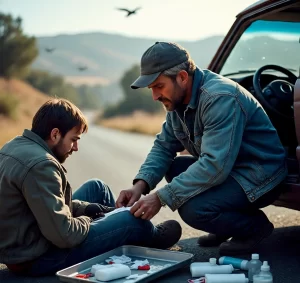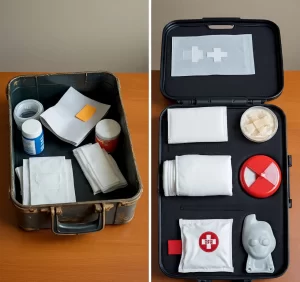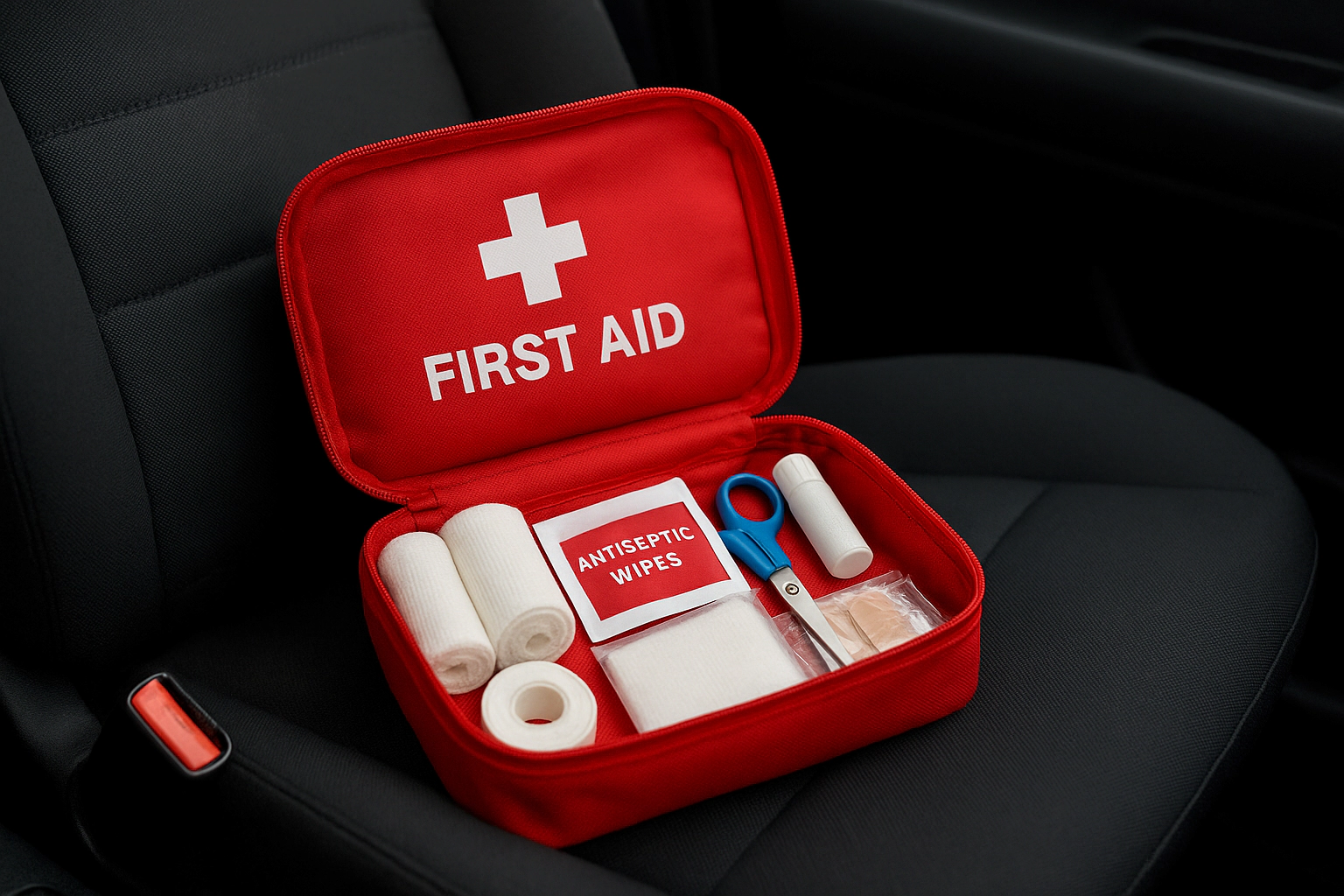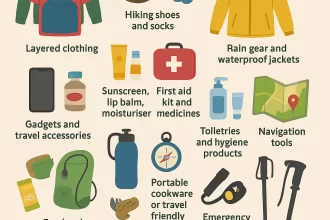Essential Items for a Basic Car First Aid Kit: A Complete Guide road
First aid supplies for cars; imagine driving down a quiet highway when suddenly, a small accident happens. Maybe it’s a cut finger while changing a tire or a passenger feeling dizzy. In these moments, having a First aid supplies for cars could make all the difference.
This guide covers the essential items every driver should keep in their vehicle, how to organize them, and why it’s more than just a convenience—it’s a safety necessity.
Why Every Driver Needs a Car First Aid Kit
Emergencies don’t wait for perfect timing. A simple cut, burn, or headache on the road can turn stressful quickly. A First aid supplies for cars ensure you can handle minor injuries, prevent infections, and stay calm until professional help arrives.
- Quick response in emergencies
- Peace of mind for families and travelers
- Compliance with some workplace and travel safety laws
Considerations Before Building Your Kit
Size and Storage
Choose a compact yet spacious kit that fits in your glove compartment, trunk, or under the seat. Waterproof containers are ideal.
Climate and Travel Conditions
If you live in a hot climate, avoid medications that degrade quickly in heat. For cold climates, include thermal blankets.
Family and Passenger Needs
Traveling with kids? Pack extra child-safe medications, adhesive bandages with fun designs, and allergy relief medicine.
Essential Items for a Basic Car First Aid Kit
When building First aid supplies for your cars, focus on practical, multi-use items.

Bandages and Dressings
- Adhesive bandages (various sizes)
- Sterile gauze pads
- Medical tape
- Elastic bandage (for sprains)
Antiseptics and Cleaning Supplies
- Antiseptic wipes
- Hydrogen peroxide or iodine
- Hand sanitizer
- Cotton balls or swabs
Medications to Include
- Pain relievers (acetaminophen, ibuprofen)
- Antihistamines (for allergies)
- Motion sickness tablets
- Burn cream or aloe gel
Emergency Tools and Safety Gear
- Scissors and tweezers
- Disposable gloves
- CPR face shield
- Small flashlight with batteries
Personal Care and Comfort Items
- Instant cold packs
- Lip balm
- Rehydration salts
- Emergency blanket
Optional but Useful Additions
Car-Specific Emergency Gear
- Reflective safety vest
- Road flares or LED triangles
- Multi-tool with knife and screwdriver
Technology and Modern Tools
- Portable phone charger
- Emergency contact card
- Small notepad and pen
How to Organize Your Car First Aid Kit
- Use clear, labeled compartments for quick access
- Place the kit where all passengers can reach it
- Keep delicate items (like medication) in a sealed pouch
Maintenance Tips
Keeping Your Kit Updated
- Check expiration dates every 6 months
- Replace used items immediately
- Rotate medications if exposed to extreme temperatures
Ready-Made vs. DIY Kits: Which is Better?

- Ready-Made Kits: Convenient, pre-packed, usually approved by health standards.
- DIY Kits: Customized for family needs, often cheaper.
Pro Tip: Start with a ready-made kit, then add personal extras.
Summary / Key Takeaways
- A basic car first aid kit is essential for road safety.
- Include bandages, antiseptics, medications, and emergency tools.
- Customize your kit based on climate, travel habits, and family needs.
- Check and update your kit regularly for maximum reliability.
<< Final Thoughts >>
Don’t wait for an emergency to realize what you’re missing. A well-stocked car first aid kit is an investment in peace of mind and safety.
Start today—either buy a ready-made kit or build your own using the checklist above. Stay safe, stay prepared, and drive with confidence.
FAQ
Do I legally need a car first aid kit?
In some countries, yes. Even if not required, it’s strongly recommended.
How often should I replace items in my kit?
Check every 6–12 months. Replace expired medications and damaged supplies.
Can I keep a first aid kit in a hot car?
Yes, but store medications in insulated pouches to reduce heat damage.
What’s the difference between a car first aid kit and a home kit?
Car kits focus on portability and emergencies during travel, while home kits can be larger and more comprehensive.
Should I include prescription medications?
Only if prescribed for regular use by a family member. Keep them in original containers.
For more information click on this link >> >> >> First Aid Kit










